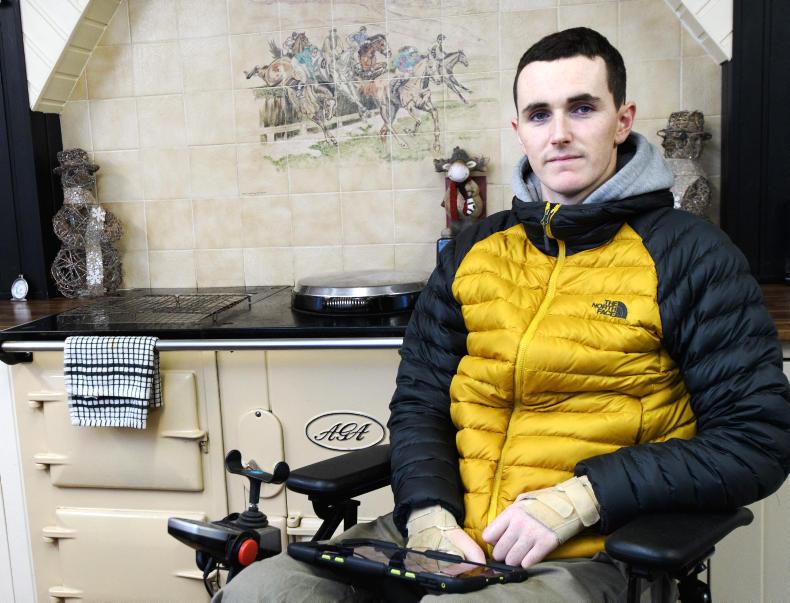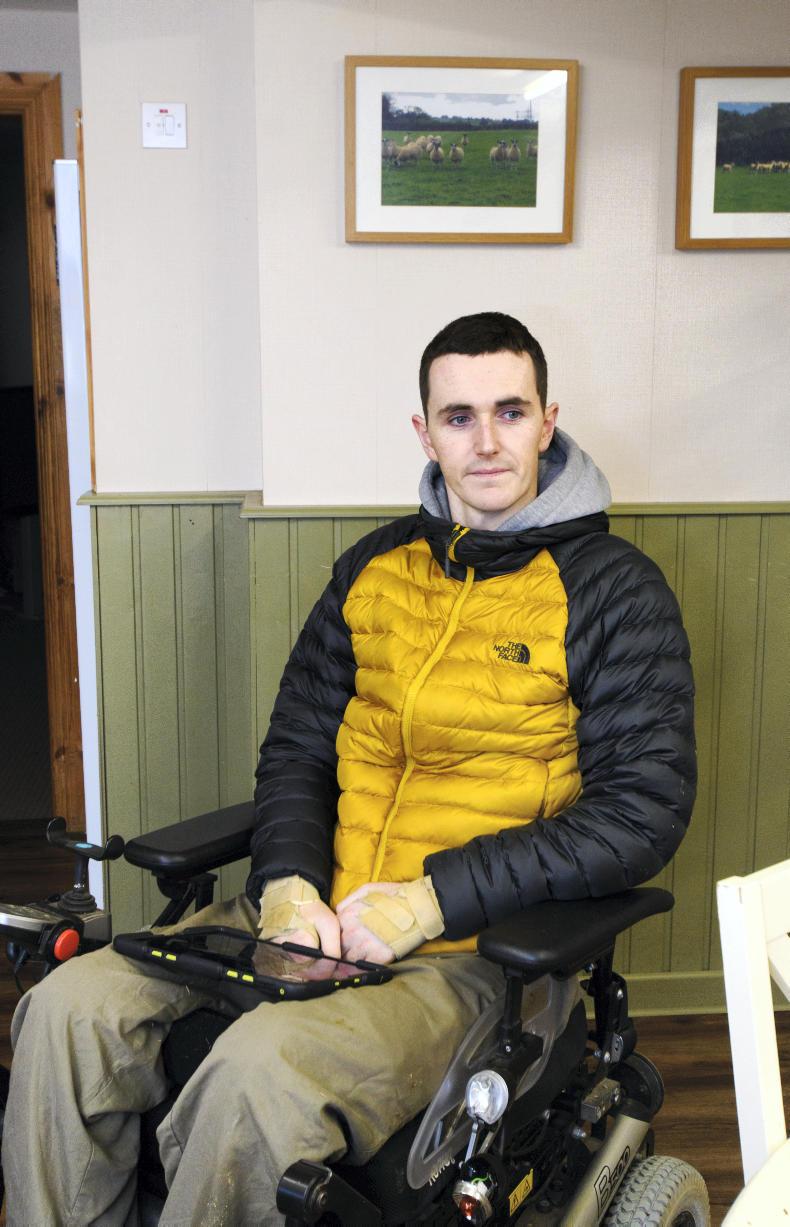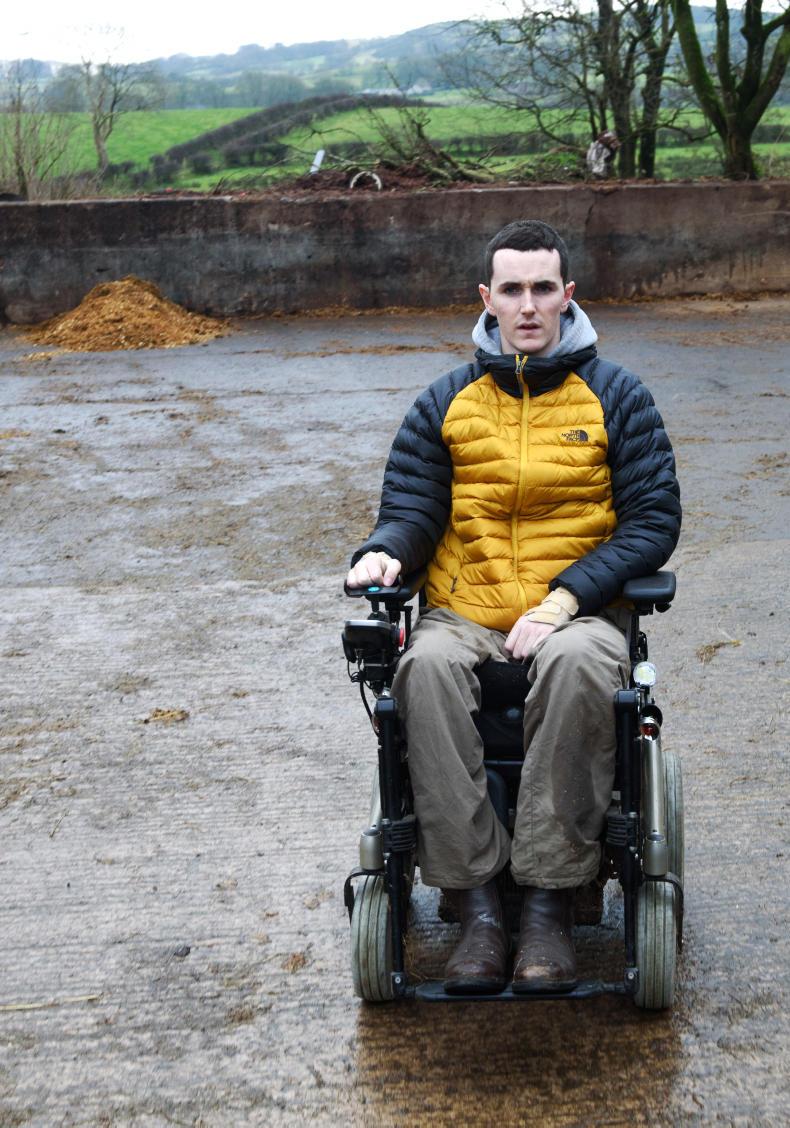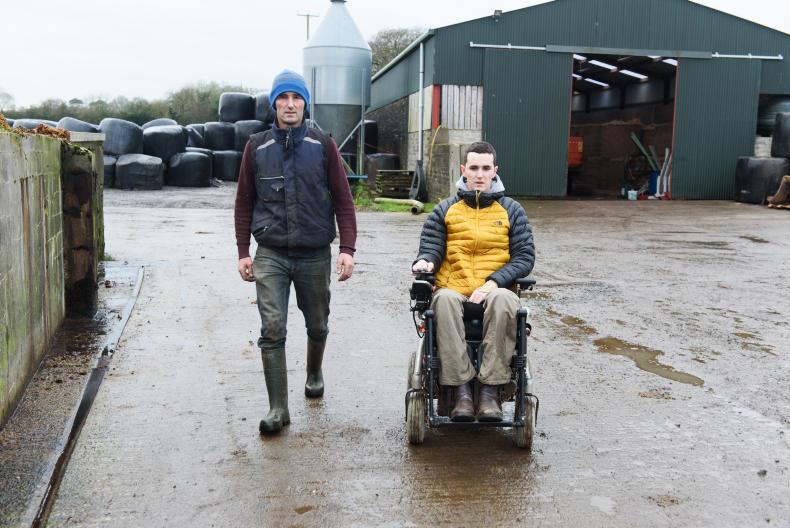The essence of our character is determined by the most challenging of times, and Jonjo Bright should be described as nothing less than a real-life hero. Doctors said that the jockey may never walk again after a fall at Tyrella racecourse in Co Down in March 2013, but Jonjo believes that the future is bright.
People would say that I was very unlucky because of what happened, but in a lot of ways I feel luckier than others.
"The support that I have received, not only from my family, friends and local people, but from the racing community and the Irish Injured Jockeys Fund, there is no other sport that looks after someone in the way that they did,” says Jonjo.
Following the accident, people rallied to support Jonjo and his uncle Robert established the Jonjo Bright Trust.
“The trust was set up because there were so many people wanting to do various things, it was a way of structuring everything,” says Jonjo.
“I like to show people how the money raised will help because it’s things like that that make the future bright. It’s not about making me comfortable so that I can enjoy looking out a window. I do believe there are great things around the corner.”
Equestrian Lifestyle
From the outskirts of Templepatrick in Co Antrim, Jonjo’s upbringing was steeped in horses.
“It would have been harder for me not to be involved with horses. My dad rode point-to-points, as did my mum, my uncle and my granda. It’s in our blood.”
Jonjo joined the local pony club before branching into registered showjumping – and he wasn’t short of talent.
I rode for Ireland and competed at the Dublin Horse show.
"I got my 12.2 Mary Dunn to Dublin. The final fence was a double and I took the last part down with my foot because I was getting too big for her,” says Jonjo.
“Showjumping is a brilliant childhood. The same people attend the shows and it’s like a big moving tribe going from one end of the country to the other.”
That said, it was only a matter of time before racing took the lead.
“My dad always had a couple of point-to-pointers in for different men. I schooled a horse that his friend had and I rode him around the old point-to-point course at Cumber. After that, the showjumping career was gone,” says Jonjo.
Receiving his jockey licence at 17, Jonjo began to make a name for himself in the world of amateur racing. Little did he know what lay around the bend.
Tyrella
“On the morning of the accident, I didn’t know if I was going to ride or not. I had an idea that there could have been a spare ride,” says Jonjo.
Jonjo secured a ride and set off, and while falling off is part and parcel of the equestrian trade, this was no ordinary fall.
“The first thing I noticed was my breathing. I couldn’t get my breath,” says Jonjo.
“Your natural reaction would be to curl up into a ball to make sure that you don’t get kicked. I realised that I couldn’t do that. It felt like I was concreted to the ground.”
Jonjo broke his neck and was paralysed almost from the neck down. He endured seven months in hospital and the assistance he received after the fall was crucial.
“The doctors said that the care that I received right from when it happened could not have been any better. What you see today is the best possible case, the best way I could have ended up,” says Jonjo.
Doctors told Jonjo that he may never walk again but he refuses to accept this.
“It’s not a bad thing to have that prognosis at the start because it gives you something to prove wrong,” says Jonjo.
Everything is impossible until somebody does it, and it is up to me to define that.
I got very good at blanking things out because you have to be ignorant to certain things at that stage. You listen to what doctors tell you of the conventional idea of how your life should be when you leave hospital, but for me that wasn’t going to be an option.”
Jonjo has regained movement in his toes, which is a huge feat for someone with a spinal injury.
“It is such a complex injury that it doesn’t make sense that the furthest the signal has to travel is to your toes. I can wiggle all my toes,” says Jonjo.
“Mine is an incomplete injury, which means that all the pathways from your spinal cord aren’t severed. Through my physio and by using the exoskeleton suit, we are trying to tap into that.”
Exoskeleton Suit
Jonjo regularly uses the exoskeleton suit, which was purchased by the Irish Injured Jockeys.
“It’s not a device that somebody can buy and walk around the house in. It’s a rehabilitation tool. It allows me to take thousands of steps every week. I see the benefits, physically and mentally,” says Jonjo.
“The suit travels around. I use it at Parkgate church hall as the floor is flat with plenty of space. You want to be able to get as many steps as possible without the inconvenience of having to turn all the time.”
The exoskeleton suit helps Jonjo to stay fit and healthy, ensuring that he can avail of future treatments.
“I think in the near future there will be treatments. I believe that paralysis is something that in our generation can be beaten. When you look back in history at some of the medical landmarks, I believe that this could be one that we will see,” says Jonjo.
“There are a lot of very smart people around the world who are starting to collaborate. That is why I want to stay in the best possible shape so that I can benefit.”
Present
Jonjo is still very involved with horses, and recently purchased two thoroughbred yearlings.
“My highlights from racing would have been my involvement with young horses and seeing what they went on to achieve. If either of my two yearlings go on to do something in the future, I would take a lot of satisfaction from that. The dream is alive,” says Jonjo.
The end goal is to walk again, but as Jonjo talks of his passion for breeding Stabiliser cattle, it is obvious that he has not allowed his injury to dictate his life.
“Stabiliser cattle were something that came up when I was in hospital. It was something for me to get stuck into,” says Jonjo.
“The Stabiliser cattle were probably the best farming decision we made so far. They are made up of four different breeds and are designed around being a profitable animal.”
The farming business at home continues to thrive due to Jonjo’s active role.
“We are always going to have a farm so I thought why not have it operating well. There was a cow that ran for three or four years with no calf, things like that don’t happen now. I look after the health of the cattle and sheep,” says Jonjo.
“We have done a lot of work since I came out of hospital, including fencing and improving the ground. We bought Romney sheep and are going to try lambing them outside, hopefully with low inputs. Between the sheep and the cattle, I would like to work towards having a farm full of animals that look after themselves and pay their way.” CL
If you would like to keep up to date with Jonjo and with the Jonjo Bright Trust fundraising events, see www.jonjobrighttrust.com
Read more











SHARING OPTIONS